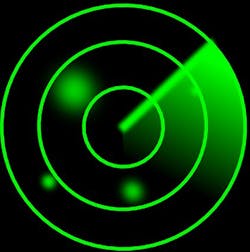Army eyes VHF aircraft radar able to detect hidden IEDs from altitudes as high as 25,000 feet
ABERDEEN PROVING GROUND, Md., 18 March 2013. U.S. Army researchers are surveying industry to find companies able to design airborne synthetic aperture radar (SAR) that uses radio frequencies between 25 and 88 MHz to detect hidden wires, weapons caches, and other components of improvised explosive devices (IEDs).
The Intelligence and Information Warfare Directorate (I2WD) directorate of the Army Research, Development, and Engineering Command (CERDEC) has issued a sources-sought notice (W15P7T13RA214) for the Very High Frequency (VHF) Synthetic Aperture Radar(SAR) Technologies and Sensors program for IED detection.
This initiative seeks to detect man made stationary and relocated targets, wires, and weapon caches located underground, in dense foliage, and under traditional camouflage and concealment with VHF radar operating at 25 to 88 MHz.
This IED-detecting radar must be able to operate from aircraft flying at altitudes as high as 25,000 feet, and have the ability to detect several different targets in ground clutter and high RF interference.
Companies interested should respond no later than 26 April 2013, with candidate technology maturity level; number of systems available; maturity (TRL level); number of systems available; size, weight, and power (SWaP); active or passive; frequency of operation; waveform type; antenna design and construction; number of receiver channels; unique processing techniques, which can include change detection and; polarimetric operation, and whether processing is performed in real-time; ability to resolve multiple targets; data format(s) of target reports and command and control; expected or measured performance data; probability of detection; false alarms rate; target location accuracy; range and cross-range resolution; and operating range and swath width.
Companies responding also should describe their experience with developing UHF and VHF SAR technologies and sensors. Email responses to [email protected]. No telephone responses will be accepted.
For questions or concerns phone the Army's Alexander del Rosario at 443-861-4642. More information is online at https://www.fbo.gov/notices/3bef453f2764b0eb585e5820117eae58.
